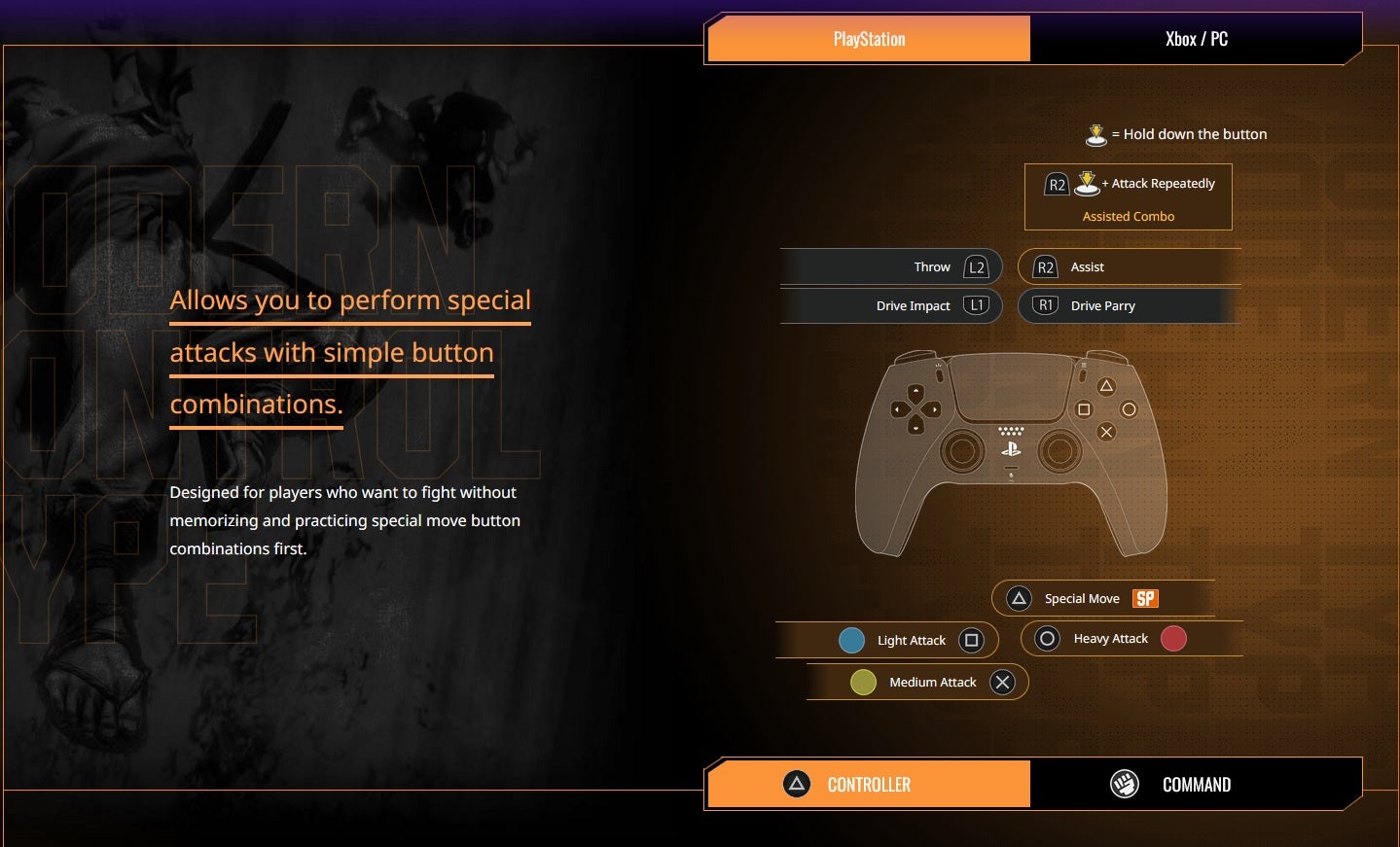Street Fighter 6's Modern controls are the accessibility breakthrough that finally let me compete in fighting games
The game-changing control scheme lets me pull of moves I physically couldn't before and focus more on strategy mid-match.

Fighting games have always been a casual interest of mine, but getting fully invested in one has always slipped through my grasp—literally. I simply lack the fine motor skills necessary to hit buttons in sequence correctly and quickly, relegating me to near-instant losses whenever I dare to step online. I’m thrilled to say that Street Fighter 6’s more easily operated Modern controls have closed that gap in a way that allows players with accessibility needs to stand toe-to-toe against hardened world warriors without compromising on mechanical depth.
I have “Klumpke’s palsy,” a condition where the muscles in my right forearm progressively, painfully atrophy, resulting in a delay between "thinking" about moving my arm and my arm responding. The six-button Classic layout of Street Fighter has always been a hurdle for me. Some context: My right arm is significantly weaker than my left, and I’m not able to move my fingers or hand upwards. When I need to hit a button or key, it’s a delayed motion that's more like a flick of the wrist (sort of like drumming!). Unfortunately, those rhythms are totally different, and despite my best efforts my typical fighting game matches consist of dropped combos and whiffed super moves. I've logged hundreds of hours across dozens of fighters, never able to rise to the skill floor necessary for the calculating, back-and-forth mind games until Street Fighter 6.
I was able to sidestep this lifelong hurdle with the auto combo feature integral to the Modern controls. I chose the PS5 controller (the Xbox One controller is a poor fit for my bad hand with its stiff bumpers and smaller face buttons) for ease of access to the bumpers, two input modifiers that provide more input flexibility. Binding the auto-combo to the right bumper I had a reliable light, medium, or heavy combo locked in the chamber, with the ability to cancel any normal moves into an equally accessible special move.
There is a cost to convenience: special moves do less damage when used with their Modern inputs (holding a direction and then hitting special, a la Smash Bros.). The damage ceiling is something in the range of 80%—still worth it for most special and EX moves, but you really notice that 20% on Super Moves & Critical Arts.
The damage ceiling feels like a fair trade-off, meant to put new players on the on-ramp to Classic controls, but heavy hitting moves gated behind charge inputs, double quarter circles, and shoryuken inputs are still uncomfortable for me to pull off. With the Classic controls those commands usually bring on a mid-fight seize up of my palsy-addled hand. I don't think I've lost matches just because some of my moves were doing less damage with Modern, but it's a disadvantage you have to work around by being a bit more aggressive. Still, Modern Controls meant that even with that damage ceiling, I was no longer worried about my hand seizing up, and I was able to pay closer attention to the patterns of my opponents.
It's a dramatic leap forward in accessibility—for me, it means being able to play for a couple hours without having to take a muscle relaxant.
All of this input streamlining brings with it a massive reduction in mental load. I feel like my defensive game is leagues stronger here than in any other fighter period—I'm still getting my ass handed to me more often than not, mind you, but knocking down that input barrier has allowed me to build a much more thorough understanding of fundamentals than I would have otherwise. For the first time, I'm consistently blocking high and low, poking at range with medium and heavy kicks, and timing my Drive Impacts to smash through special moves and follow up with a devastating (if slightly neutered) Level 3 Super.
Keep up to date with the most important stories and the best deals, as picked by the PC Gamer team.
In my matches I was always comfortable, confident even, never feeling like I was at some egregious disadvantage based on how I pressed buttons. And I wasn’t stuck in some segregated lobby with other fighters using Modern controls: I was trading blows with seasoned veterans, even winning a few matches against intimidating players who were comfortably using the Classic scheme.
I’ve mainly been going to town on Ken, whose simple quarter circle inputs and strong normal moves provide a versatile enough toolkit for me to wrap my head and hands around. It’s an environment where I want to get better—I’ve already adjusted my controls a half dozen times, moving grab off of the trigger and binding a macro that lets me quick step and rush other fighters down all the easier.

Modern controls also makes character switching a lot smoother, providing an accessible sample platter of distinct fighting styles. Manon's sweeping ballet moves and Sailor Moon-esque finishing pose instantly drew me to her; same with hardcore Junglist DeeJay's groovy feints and E. "Edward" Honda's stupid good overhead chops.
Accessibility in games is often a needly issue—it's a topic that can quickly turn toxic, but from my experience, it doesn’t always come from a place of ableism. Rather, It’s true that games can benefit from having a high barrier of entry, something that can’t be overcome by going to the options menu and selecting "easy." It’s also true that games need to do better at including accessibility and input options that let players, especially those with physical disabilities, tune the game to their own needs. I was thrilled to see that Street Fighter 6’s Modern Controls have struck this balance perfectly, and I'm eager to spend more time honing my fighting instinct in a way I've never been able to before.

Nova Smith is a freelance writer based out of Alberta, Canada. Nova's grab bag of non-gaming interests and passions includes Japanese mecha anime, miniature painting, as well as history, literature, and classical music. Nova also moonlights as a bureaucrat and amateur historian.

